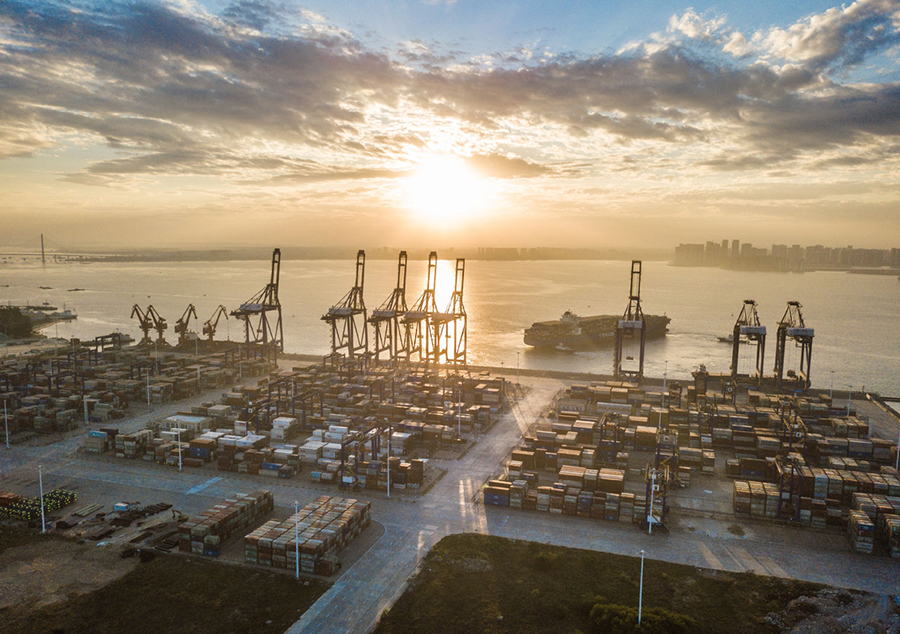
An aerial view of Yangpu economic development zone in South China's Hainan province is seen in this file photo taken on Dec 5, 2021. [Photo/Xinhua]
This is an editorial from China Daily.
In a hard-earned result, given the attempts the United States has exerted to reshape the global supply chains, China's foreign trade realized 30 percent year-on-year growth last year.
Its total export and import volume reached $6.05 trillion in 2021, compared with $4.6 trillion the year before, according to data released by the General Administration of Customs on Friday.
While a strong performance might have been expected since the country has the largest comprehensive manufacturing sector and it is the only major economy to have largely contained the novel coronavirus, the "robust resilience" of China's foreign trade in the face of severe fallout from the pandemic, was "dazzling", Li Kuiwen, spokesperson of the GAC, told a news conference on Friday in Beijing.
That "robust resilience" benefits both the world and China, as it sustains the stability of the global supply chains, and stokes the quick recovery of the Chinese economy, whose growth was up 9.8 percent year-on-year over the first three quarters of last year.
However, although China's trade may continue to grow this year, its marginal effects in boosting economic growth are falling sharply. Year-on-year GDP growth slowed remarkably from 18.3 percent in the first quarter to 4.9 percent in the third.
That the government prioritizes employment and assisting small and medium-sized enterprises indicates that top policymakers are aware of the hidden dangers behind the rosy figures, and they are on high alert to the uncertainties and risks the country faces.
The three pressures on the Chinese economy — contracting demand, supply chain shocks and weakening expectation — are becoming more prominent, as the global economic recovery is weak and precarious, featuring a shortage of semiconductors, containers and laborers, and the soaring prices of transportation, raw materials and energy.
If the price hikes on these fronts are not checked, the fast increase of foreign trade will become a burden on the Chinese economy at last. No wonder some export enterprises have already started turning down orders to avoid the dilemma that the more they produce the more they lose.
To effectively promote sustainable high-quality development that is crucial for it to manage the risks and uncertainties, China must unswervingly press ahead with its painstaking efforts to upgrade its industries, improve its business environment, make breakthroughs in key technologies and restructure its economy.
As the growth of global trade and investment slows down, the share of intermediate goods in world trade, a staple trade form for developing countries, is dwindling continuously. The golden age of economic globalization has come to an end, and it has become a basic trend that the global supply chains are shrinking, shortening and localizing, with countries placing more emphasis on national security and national interests.
China has to adapt to that new normal, and that places higher requirements on it to realize high-quality development.

 中文
中文





